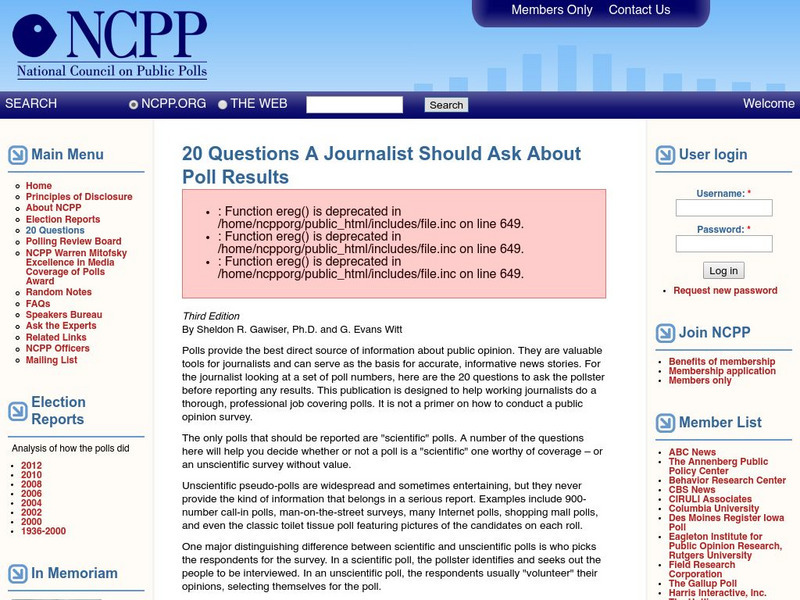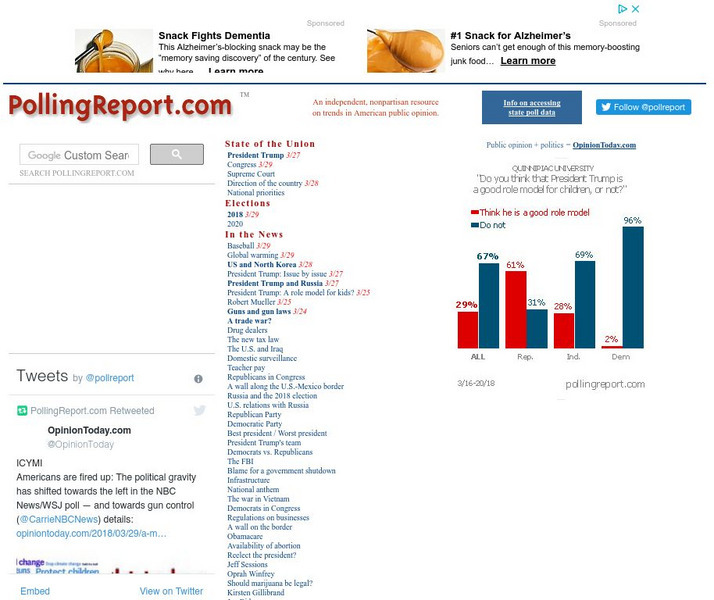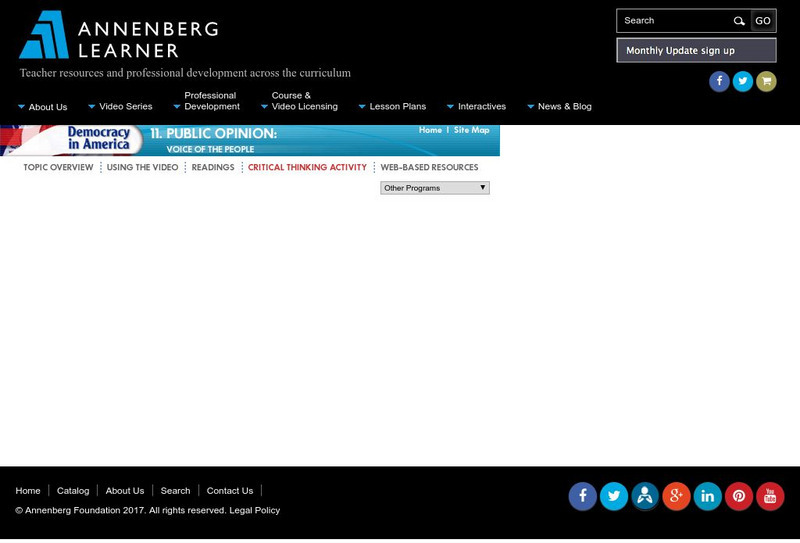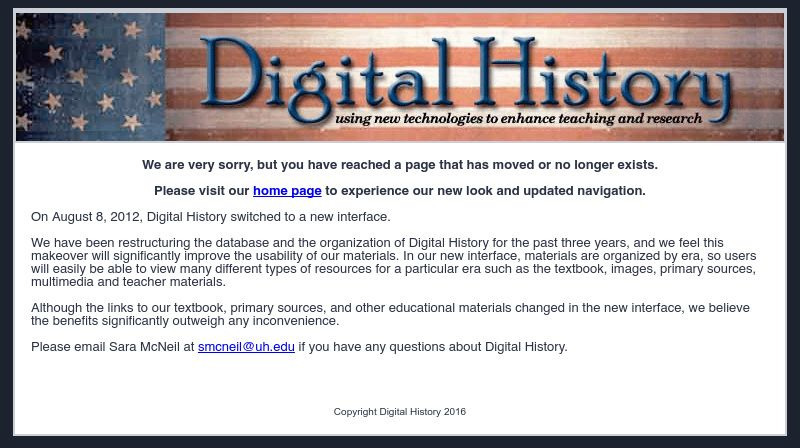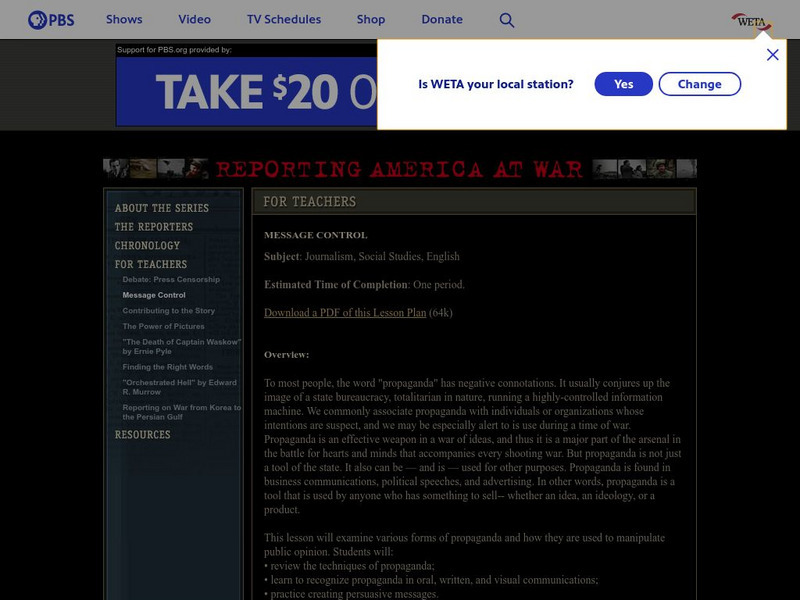Cornell University
Cornell University: Roper Center for Public Opinion Research
This site is useful because it offers a database of over 300,000 questions asked on surveys since the 1930s. Also contains Latin American and Japanese data bank retrieval system as well. Listing of general social surveys 1972-1998.
PBS
Pbs American Experience: Vietnam Online
A PBS website that describes the events and people of the Vietnam War. Includes a timeline of the era.
British Library
British Library: Taking Liberties
A series of where-do-you-stand scenarios weighs the rights of citizens alongside issues of online censorship, freedom from want, the monarchy, voting restrictions for prisoners, and a host of contentious contemporary concerns among the...
Annenberg Foundation
Annenberg Learner: Public Opinion: Voice of the People
Examine public opinion and the various means in which to collect it as well as how the government uses the opinions collected. This resource offers video, readings, web resources, and activities.
Other
Gallup Home: Gallup
Official homepage of the Gallup Organization. Fascinating look at all sorts of polls.
iCivics
I Civics: Media and Influence
In this library of mini-lessons, students will learn about sources of influence on our society and our government such as the media and special interest groups.
Massachusetts Institute of Technology
Mit: Open Course Ware: Public Opinion and American Democracy
Illustrate the significance of public opinion during political events by utilizing these reading resources.
Patrick McSherry
Spanish American War Centennial: Black, White, and Yellow
This site contains information on the type of journalism that the press used during the Spanish-American War. It includes a brief history of how yellow journalism influenced the Spanish-American War.
Stanford University
Political Communication Lab
An interactive website that is dedicated to gathering and disseminating public opinion on a variety of issues that shape U.S. politics.
Other
Ncpp: 20 Questions a Journalist Should Ask About Poll Results
The NCPP site asks 20 questions journalists should consider when using poll information. Click on each question to get a discussion of the answer. A click on a sidebar gives analysis of polls from elections from 1936 to present.
Other
Polling report.com
This non-partisan site reports the results of the latest national public opinion polls. Constantly updates and informational.
Other
Polling report.com
How's the President doing? What do people think of the death penalty? Who will win the next election? This polling site offers the results of a number of national polls on a variety of topics. Most are current and include tables and charts.
Annenberg Foundation
Annenberg Learner: The Art of Creating a Poll
You are the head of the Public Relations committee for your hometown Waste Removal Department. Create a poll for your department to find out how the public feels about waste incineration.
Other
Nes Guide to Public Opinion and Electoral Behavior
Since 1948, the National Election Studies group has been polling Americans on public policy issues. Information is presented statistically and graphically on a wide range of topics involved in the "flow of public opinion and electoral...
University of Pennsylvania
Draft Resistance in the Vietnam Era
Analysis of number of men who resisted the draft during the Vietnam War, the types of evasion, and the reasons they gave for resisting.
Pew Research Center
Pew Research Center: Global Indicators Database
About the Key Indicators Database: Pew Research Center conducts public opinion surveys around the world on a broad array of subjects ranging from people's assessments of their own lives to their views about the current state of the world...
iCivics
I Civics: Interest Groups
students will learn how people form interest groups, and how they influence the government. This lesson uses the battle over school lunch ingredients to illustrate how interest groups and lobbying affect public policy.
iCivics
I Civics: The Public Sphere
Students discover the relationships among the concepts of public sphere, public agenda, public opinion, public policy, and how they influence the issues we all discuss and care about.
Digital History
Digital History: The War at Home
By the middle of the 1960s, American public opinion was beginning to favor US withdrawal from the Vietnam War. After the Tet Offensive in 1968 and Nixon's secret bombings of Cambodia, the majority of Americans were calling for complete...
Cynthia J. O'Hora
Mrs. O's House: Government, Statistics and the Media
Dig into the role media has on public opinion by discussing questions raised and reviewing resources provided with this lesson.
PBS
Pbs: Message Control (Lesson Plan About Propaganda)
A lesson that guides learners through an examination of various forms of propaganda and how propaganda is used to manipulate public opinion. Includes research into the history of propagandistic communications.
American Forum for Global Education
American Forum for Global Education: Move, Feet, Move
Making good choices is the economic principle explored here at the American Forum for Global Education. Children learn to "identify alternative choices in conflict situations" through the use of verbal and nonverbal cues.











